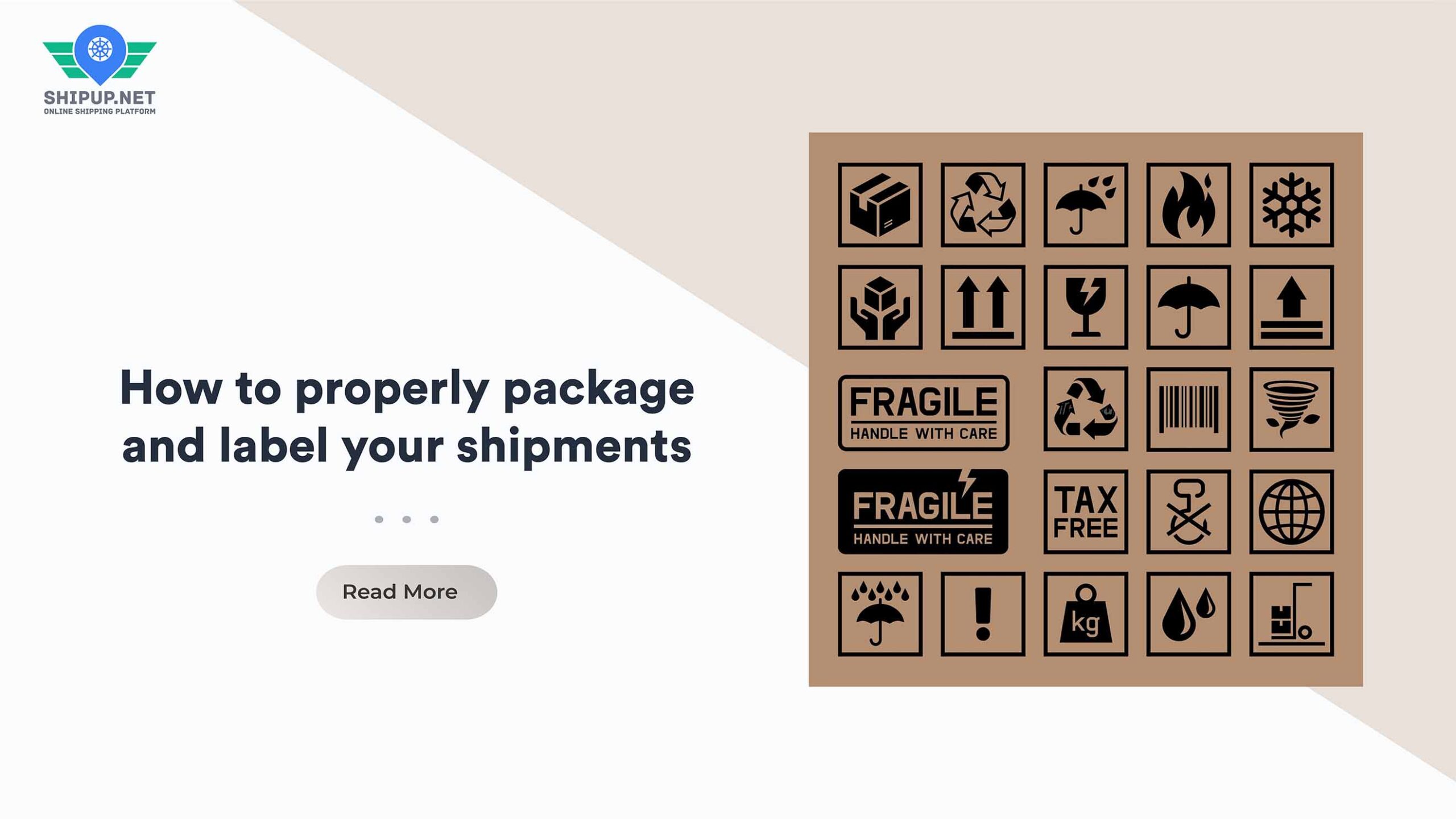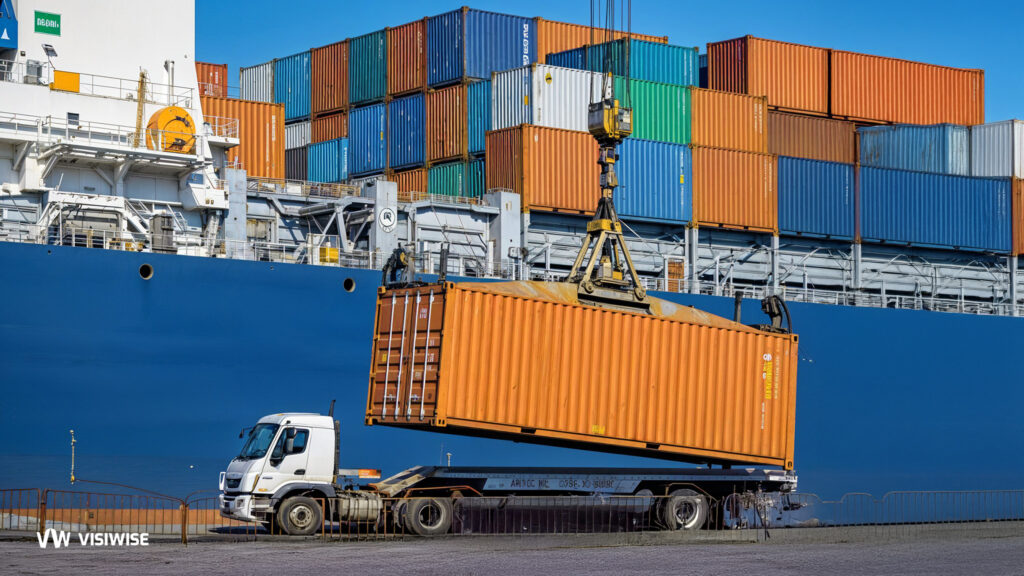To ensure a safe and successful shipment, it’s important to become familiar with government regulations towards shipping. Common labeling requirements include the name and address of sender and receiver, a barcode, hazard warnings, tracking information, and signature requirements. Make sure you follow all applicable rules to avoid problems with customs or delays in transit.
Packaging is also critical when it comes to shipping—packing materials must be sturdy enough to support the weight of and keep the items secure during transit.
Shipping freight can be a complex process, and it’s easy to get caught up in the many steps involved. But don’t let labeling become an afterthought. In fact, it’s one of the most important actions you can take to protect your goods during transit. Accurate and effective labeling ensures your packages reach the correct destination at the required time, and is critical for safe and efficient delivery. Neglecting proper labeling can lead to cargo damage and delays, so it’s important to give this step the attention it deserves. In this article, we’ll explore the ins and outs of how to properly package and label your freight shipments, so you can ensure your goods arrive at their destination in top condition.
The Consequences of Poor Labeling: Examples of How it Can Go Wrong
Imagine you are a company that produces and sells various types of chemical products. One of your customers, a research laboratory, has placed an order for a shipment of several hazardous chemicals. The package containing these chemicals must be handled with extra care, as they can pose a significant risk to anyone who comes into contact with them.
If the package is not labeled with the appropriate hazardous materials information, it could be mishandled or even refused by carriers. This could lead to delays in delivery or even the package being rejected altogether. Furthermore, if the package is damaged in transit, it may not be immediately apparent that the contents are hazardous, which could result in a dangerous situation for the people handling it.
However, if the package is labeled properly with all the required information, carriers and handlers can take the necessary precautions to ensure the package is delivered safely and efficiently. This underscores the importance of labeling in freight shipping, particularly when it comes to hazardous materials or other sensitive items.
Imagine a company that specializes in selling delicate glassware. If the packages are not labeled as "fragile" or "handle with care," there is a risk that the packages may be mishandled or stacked improperly, leading to broken or damaged glassware.
Another example involves food products. If a package of food is not labeled with the correct temperature requirements, it may spoil during transit, leading to a loss for the shipper and potential health hazards for the consumer. Proper labeling with temperature guidelines and handling instructions is critical to ensure that perishable goods are delivered safely and in good condition.
The Benefits of Proper Labeling for Freight Shipping
Proper labeling is a critical component of freight shipping that offers numerous benefits to shippers and carriers alike. Here are some of the key benefits of labeling your goods properly:
Ensures compliance with shipping regulations
The US and many other countries have specific labeling standards for freight shipments. By properly labeling your goods, you can ensure that your cargo meets these standards and avoids any issues with customs.
Facilitates proper handling
Freight shipments can pass through the hands of multiple parties, from haulers to customs officers, and warehouses to warehouses. Proper labeling provides clear instructions on how to handle the cargo, reducing the risk of damage or loss in transit.
Improves identification and tracking
Proper labeling makes it easier for receivers to identify and track your shipment, improving communication and coordination throughout the shipping process.
Reduces the risk of damage or loss
By providing clear handling instructions, proper labeling reduces the risk of damage or loss to your cargo during transit. This can save shippers time and money in the long run by avoiding costly shipping errors or delays.
Ensures compliance with environmental and safety standards
Proper labeling can also help shippers ensure compliance with environmental and safety standards, particularly for hazardous materials or other sensitive goods.
What to Include in Your Labeling
When it comes to labeling your freight shipments, it’s important to include specific information that will help ensure your cargo is handled and delivered safely and efficiently. Here are some key elements to include in your labeling:
- The port and country of origin and destination: Your labels should clearly indicate the port and country of origin and destination for your shipment. This information will help carriers and handlers identify where the cargo needs to be delivered and can also help ensure compliance with customs requirements.
- Shipping mark: Your shipping mark is a unique identifier for your cargo and should be clearly displayed on all packaging materials. This mark can include information such as the name of the shipper, the consignee, and the package number, and should be consistent across all items in your shipment.
- Weight and size: Including the weight and size of your shipment is important for carriers and handlers to determine the appropriate handling requirements and to ensure that the shipment is properly loaded onto transportation equipment. It’s also important to include both imperial and metric measurements to ensure clear communication with all parties involved.
- Number of items and sizes: In addition to the weight and size of your shipment, it’s important to include information on the number of items being shipped and their individual sizes. This can help carriers and handlers identify how best to pack and transport the items to ensure their safety and efficiency.
- International pictorial symbols: Including international pictorial symbols on your labeling can help communicate how your cargo should be handled and transported. Symbols indicating fragile items, hazardous materials, or temperature-sensitive goods can help carriers and handlers take the appropriate precautions to ensure safe delivery.
By including these key elements in your labeling, you can help ensure that your freight shipments are properly handled and delivered in compliance with all necessary regulations and standards. Take the time to carefully label your goods to avoid costly shipping errors and delays, and to help ensure the safe and efficient delivery of your cargo.
Overall, proper labeling is an essential aspect of freight shipping that offers a range of benefits to shippers and carriers alike. By taking the time to label your goods correctly, you can help ensure that your cargo arrives at its destination safely, efficiently, and in compliance with all necessary regulations and standards.
Labeling for fragile and dangerous goods
When shipping sensitive cargo, it is important to take special care in labeling to ensure that the goods are transported safely and avoid any damage. For fragile goods, adding cautionary instructions in English and other applicable languages is crucial to prevent damage. Examples of these instructions include “This Side Up,” “Fragile,” or “Non-stackable.” These labels indicate to the carrier how the package should be handled during shipping. For instance, the “Fragile” label alerts the carrier that the package contains breakable items and requires special handling to avoid damage. Similarly, the “This Side Up” label shows which side of the package should face upward to prevent any mishandling.
In the case of shipping perishable goods such as foods or plants, labeling is even more important. It is critical to clearly indicate that the package contains perishable goods and to provide clear instructions on the required temperature and humidity limits to ensure that the goods do not spoil during transport. A package containing fresh seafood, for example, should be labeled with the words "Perishable" and "Keep Refrigerated" to avoid spoilage during transport. Proper labeling in this case is essential to ensure the safety and quality of the goods.
Dangerous goods are considered as such when their properties or characteristics pose a risk to health, safety, property, or the environment. Labeling of dangerous goods is especially important to ensure that the carrier understands what is being transported and how it should be treated.
Explosives: Different Types and Hazards
Explosives are classified as one of the most dangerous goods in the shipping industry. There are six different types of explosives, each with its own hazard class, that must be properly labeled to ensure safety during transportation.
1.1 Mass Explosion Hazard
Explosives classified as 1.1 present a mass explosion hazard. This means that the substance can detonate when exposed to heat or shock, resulting in an explosion that could potentially damage or destroy the surrounding environment. Examples of this type of explosive include dynamite, TNT, and RDX.
1.2 Projection Hazard But Not a Mass Explosion Hazard
1.2 explosives present a risk of projection but do not have a mass explosion hazard. This means that the substance may explode and propel fragments at high speed, but it will not cause a full-scale explosion. Examples of this type of explosive include rocket motors and propellants.
1.3 Fire Hazard and Minor Explosion or Projection Hazard
Explosives classified as 1.3 have a fire hazard and may cause minor explosion or projection hazards, but not mass explosions. These types of explosives may ignite when exposed to heat or flame, causing a minor blast or projection hazard. Examples of 1.3 explosives include flares and signal devices.
1.4 Minor Explosion Hazard
Explosives classified as 1.4 pose a minor explosion hazard. These substances may explode if subjected to high heat or a strong external force, but will not cause significant damage or danger. Examples of this type of explosive include some types of ammunition and fireworks.
1.5 Insensitive Explosives with a Mass Explosion Hazard
1.5 explosives are insensitive to external stimuli but still pose a mass explosion hazard. This means that even though the substance may be difficult to ignite or explode, it can still cause a large-scale explosion if it is triggered. Examples of this type of explosive include some types of plastic explosives and some military weapons.
1.6 Extremely Insensitive Articles Which Do Not Have a Mass Explosion Hazard
Explosives classified as 1.6 are extremely insensitive and do not pose a mass explosion hazard. These types of explosives require a large amount of energy to be triggered and are not considered to be a significant danger during transportation. Examples of this type of explosive include some types of ammunition and pyrotechnic devices.
Gasses: Flammable, Non-Flammable, and Toxic
Gasses are a commonly transported hazardous material that requires careful handling and labeling. There are three different types of gas classifications based on their properties and hazards.
2.1 Flammable Gasses
Gasses classified as 2.1 are flammable and present a risk of fire or explosion. These types of gasses can be ignited by a spark or open flame, and they require special handling and labeling during transport. Examples of flammable gasses include propane, butane, and hydrogen.
2.2 Non-Flammable, Non-Toxic Gasses
Gasses classified as 2.2 are non-flammable and non-toxic, meaning they do not present a significant risk of fire, explosion, or health hazard. These types of gasses are considered to be relatively safe during transportation, and they require minimal handling and labeling. Examples of non-flammable, non-toxic gasses include nitrogen, argon, and helium.
2.3 Toxic Gasses
Gasses classified as 2.3 are toxic and present a health hazard if inhaled or ingested. These types of gasses require special handling and labeling to ensure that they are not accidentally released and cause harm to people or the environment. Examples of toxic gasses include carbon monoxide, hydrogen sulfide, and chlorine.
3 Flammable Liquids:
Flammable liquids are substances that have a flashpoint below 100 degrees Fahrenheit and can ignite easily when exposed to heat, spark, or flame. These liquids require special handling and labeling to ensure that they are not accidentally released and cause harm to people or the environment. Examples of flammable liquids include gasoline, diesel fuel, and alcohol.
4 Flammable Solids, Spontaneously Combustible, and Dangerous When Wet:
Flammable solids are materials that can easily catch fire and continue to burn when exposed to a spark or flame. Spontaneously combustible materials can ignite and burn without an external heat source. Dangerous when wet materials can release a flammable gas when they come into contact with water. Examples of flammable solids include matchsticks, certain metals, and fireworks. Examples of spontaneously combustible materials include oily rags, coal, and hay. Examples of dangerous when wet materials include sodium, potassium, and calcium carbide
Oxidizing Substances and Organic Peroxides
5.1 Oxidizing Substances
These are substances that can release oxygen during a chemical reaction and can cause or enhance a fire. For example, hydrogen peroxide, perchlorates, and nitrates. These substances should be labeled and handled with extreme care as they can lead to serious accidents if not managed properly.
5.2 Organic Peroxides
These are substances that contain a peroxide group (-O-O-) in their chemical structure. They are thermally unstable and can decompose rapidly, leading to a fire or explosion. Examples of organic peroxides are benzoyl peroxide, cumene hydroperoxide, and di-tert-butyl peroxide. These substances require proper handling and storage to avoid any accidents.
Toxic and Infectious Substances
6.1 Toxic Substances
These are substances that can cause harm when they come into contact with living organisms. They can be harmful if ingested, inhaled or absorbed through the skin. Examples of toxic substances include cyanides, arsenic, and mercury. These substances should be labeled and handled with extreme caution to avoid any harm to humans or animals.
6.2 Infectious Substances
These are substances that contain pathogens (bacteria, viruses, etc.) that can cause disease in humans or animals. Examples of infectious substances include blood samples, cultures, and medical waste. Proper labeling and handling are essential to prevent any spread of disease.
Radioactive Material
7.1 Radioactive Material, Category I
These are materials that have a high risk of causing serious health effects if ingested, inhaled, or absorbed through the skin. Examples of category I radioactive materials are plutonium and uranium. These substances require strict labeling and handling procedures to prevent any exposure.
7.2 Radioactive Material, Category II and III
These materials have a lower risk of causing serious health effects but still, require careful handling and storage to prevent any exposure. Examples of category II and III radioactive materials are americium and cesium.
7.3 Radioactive Material, Low Specific Activity (LSA) and Surface Contaminated Objects (SCO):
These materials have a lower radioactivity level and require less stringent handling procedures. Examples of LSA and SCO materials are laboratory equipment and medical isotopes. Proper labeling and handling procedures are still required to prevent any exposure.



